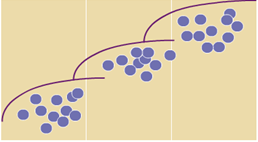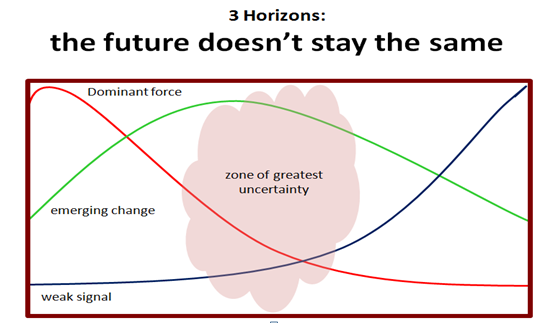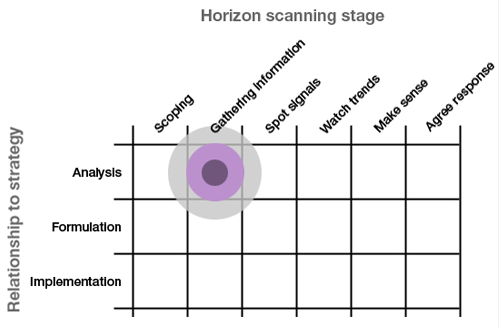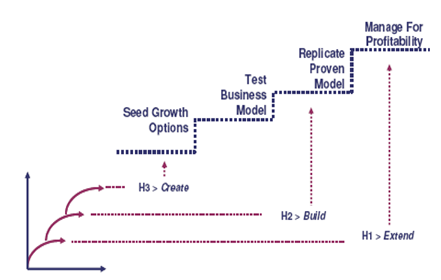This is part two of three blogs on the Three Horizon Framework and follows my one called “The value of managing innovation across the three horizons.” It further adds to the initial blog I wrote last year, called “the three horizon approach to innovation (http://bit.ly/ck8KfN). That blog gave a short introduction to the three horizon approach arguing we should take a more evolutionary perspective across the entire innovation business portfolio by using this model.
Going beyond that initial introduction in a trilogy of blogs, I plan to explore in this one, the second of these three simultaneous blogs, much of the thinking behind the Three Horizon model.

I’ve drawn on different articles and views and acknowledgement to these authors is at the end of the third blog. I’ve added my interpretation to a number of visuals that significantly help understand the value of the Three Horizons in aligning innovation and strategy as it connects the present with the future in a useful way.
The future never stays the same
Much of what we do today is the dominant force behind where we go in the future. What we must be constantly alert too is the emerging changes taking place and also pick up on the often ‘weak signals’ that lead often to completely radical change within our industry or the society we serve.
The problem for management is anything discussing the future enters the ‘zone of uncertainty’ and this ability to often ‘read the tea leaves’ determines the future health of the organization. Ignore these shifts or signals and you are on the path to your own ‘destruction’.

The ability to scan the horizons
Not only should we search for possibilities that extend and strengthen our existing core offerings but we should search out on a wider basis. We need to often challenge our existing assumptions, gather different views of the world, spot shifts taking place within our markets so we can anticipate and preperare more for inevitable change that simply occurs more and more. There are different steps to this scanning and this visual provides a useful process of moving from scoping to developing a response to the ‘threat’ or shift.

It is also useful to think about the way to fund and resource these different horizons

This approach fits with existing management thinking but it works really well within the Three Horizon framework as outlined in the visual. The ability to create, to build and extend occurs within the three horizons. It is investing in all three horizons but in appropriate levels of allocation. How much is dependent on your conditions.
A example of allocating appropriate resources

In this example, as the knowledge of the market grows and the emerging understanding of technology you have different horizons to invest in, to allocate your funds and resources. Firstly those that continue to build on the existing market that is currently known and served (H1). Then those that exist but you have not yet fully understood or entered but seem to be potential places where disruption might happen. Then you need to be represented (H2) and finally, then those new markets, that become new categories, even radical that might change the market dynamics where you must have some ‘readiness and awareness of’(H3). Perhaps you invest your resources on this 70:20:10 basis as an example..
The need is to define your route so as to navigate the different horizons. An emerging framework developed by myself is explained next, in a separate and final blog of the trilogy.
NB: This is a part of three simultaneous blogs on the three horizon model exploring it more extensively, Part one is here, part two (this post) is here and part three here
5 thoughts on “Connecting the Future Across Three Horizons combining Strategy and Innovation”
Comments are closed.